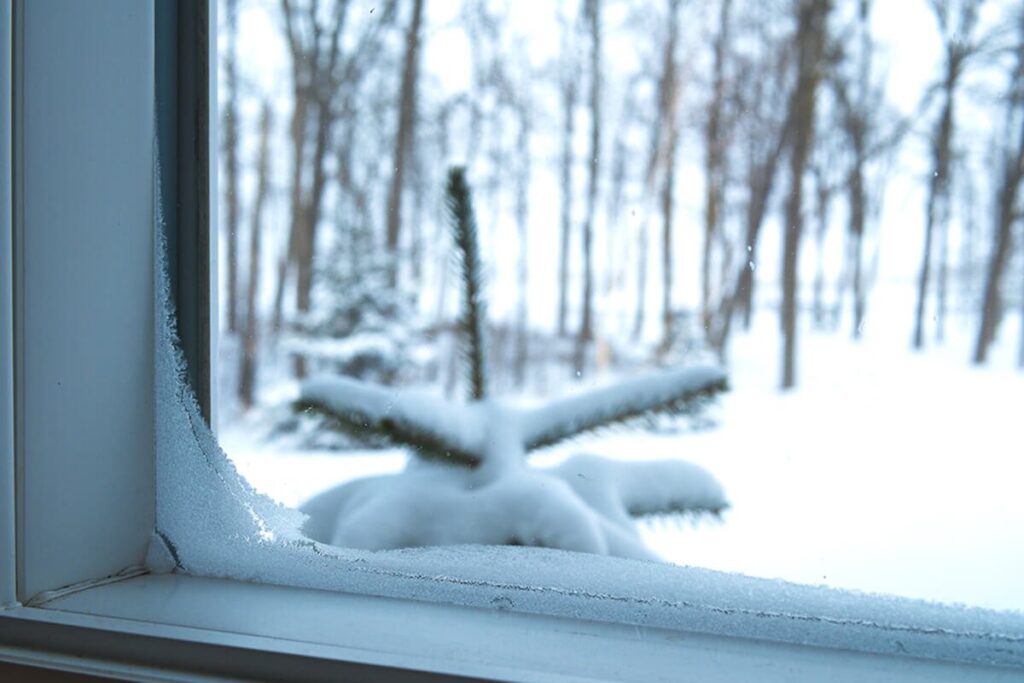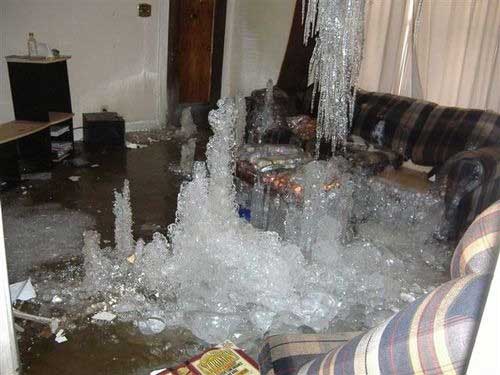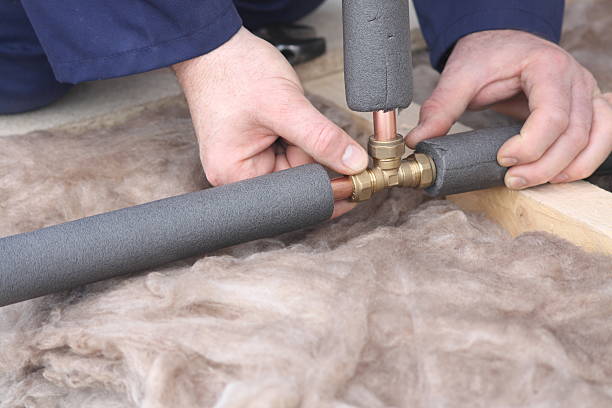With winter fast approaching, it’s important to be aware of the danger of frozen pipes. Our previous few years of winter have been pretty brutal with some temperatures dropping to the single digits! Frozen pipes can happen to anyone! Although more common with old homes, pipes can freeze in newer homes if the right precautions aren’t put in place.
In mass-produced homes that have corners consistently cut during construction, frozen pipes are a little bit more common. It could start with something simple, such as a piece of insulation coming loose in your bathroom walls for your pipes to freeze. In this post, we’ll cover all the important details to prevent your pipes from freezing this winter season.

Why Frozen Pipes are Bad
While at first glance, frozen pipes might seem more annoying than serious. In a majority of cases, that’s all it is. If your pipes have water flowing through that line for a period of time, you should be fine. However, if you don’t, your pipe will actually burst which can cause major flooding and damages to your home.
What Causes Frozen Pipes to Burst?
When water in a pipe freezes, it creates a blockage in the pipe. The blockage prevents any water from flowing through the pipe. As the water in the pipe expands, turning to ice, it creates intense pressure. This pressure slowly builds up until it has nowhere to go. So the pipe will keep expanding until it eventually bursts. Water will then begin to flow out of the burst pipe until someone finds out about it or turns off the valve.

The Best Ways to Prevent Frozen Pipes
The best way to prevent your pipes from freezing is to avoid them at all costs. You might be asking yourself, how do I do that? In the below list, we go over all of that for you:
- Leave Your Water Dripping During Cold Nights: Water naturally has a harder time freezing when it’s running. During the freezing cold nights, slightly open up the faucets throughout your home. For pipes in exterior walls, this is significantly more important. Allowing the water to drip will make it a lot harder for these pipes to freeze.
- Insulate Your Problem Pipes: In older homes, you’ll start to notice that specific pipes freeze more often than others. Adding an additional foam insulation to these pipes will stop them from freezing. It is cheap and simple to apply. Applying an extra layer of insulation helps protect the problem pipes from becoming more exposed to the cold.
- Leave Cabinet Doors Open: The pipes in your home can often freeze from inside your cabinets in your bathrooms and kitchen. Even if the room itself is warm, the closed doors of the cabinet will prevent the heat from entering the cabinet, freezing your pipes as a result. Leaving your cabinet doors open will allow heat to enter and warm up the interior of your cabinet, allowing your pipes to receive some warm air.
- Turn Up The Heat: Sometimes during really cold nights, some people will lower the heat to save money. But, you actually want to do the exact opposite. When it’s really cold out, you want to raise your overall temperature so that you will prevent the cold areas of your home from freezing.
- Install a Space Heater: These heaters are very good to use for in sections of your home that tend to get cold fast. These can include areas in your basement or places located underneath a back porch. Space Heaters come in handy when you need to warm up a cold section of the house fast!
- Use Heated Cabling or Tape: Using heating cabling or tape as an additional heat source in locations where pipes tend to freeze is helpful. This requires you to be a bit more involved because there will be times where you need to turn the cabling on and off. Try to only use this if extra insulation and dripping faucets don’t work out for you.
- Ensure that You Have Enough Heating Oil: If you run out of heating oil, then you’ll have no heat. That means your pipes are extremely likely to freeze. To prevent run out, order oil when you’ve reached a quarter tank of oil. After you’ve ordered oil, run to the gas station and pick up around 5 to 10 gallons of heating oil to keep you warm until your delivery arrives.

Conclusion
Stopping frozen pipes before they even start to form will be a huge help to you. It’ll also save you thousands of dollars in repairs as well as some nasty headaches. Make sure that you always turn the heat up when the temperature is forecasted to be extremely low. Ensure your baseboards are warm enough by touching them throughout your home. This normally indicates that water is flowing through your pipes and that no blockage is present.
Leave your faucets dripping, cabinets open and insulate your pipes and you should have no issues with frozen pipes! If you notice a frozen pipe in your home, contact a plumber immediately! It’s important to be on top of these issues as some pipes can burst while thawing. So it’s important to have a professional handle it from here.
Happy Heating,
Hunter



